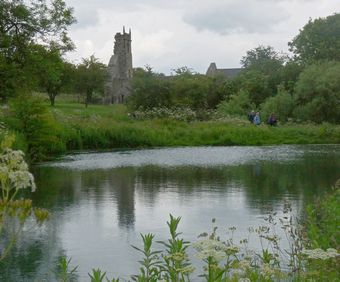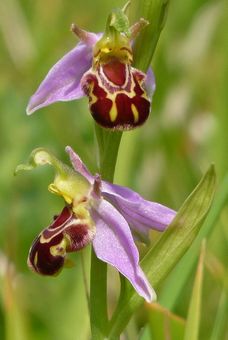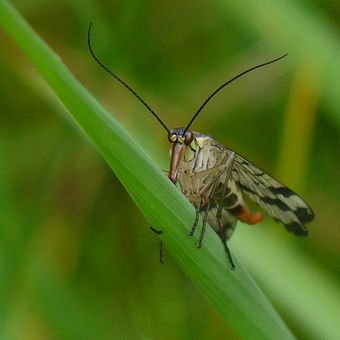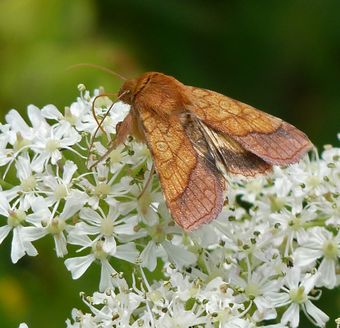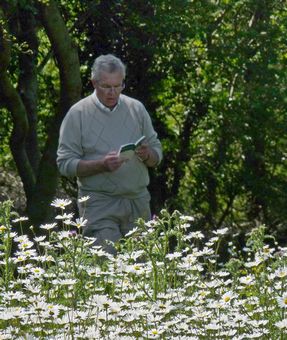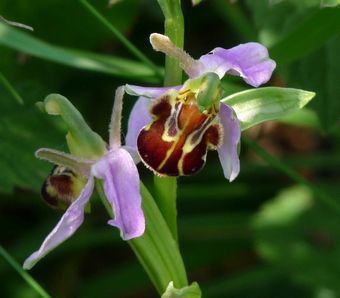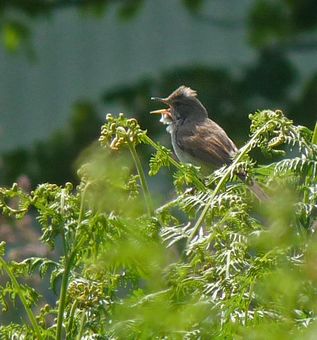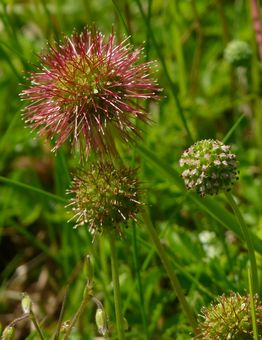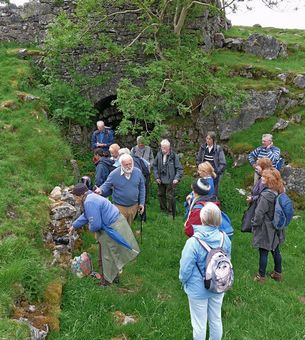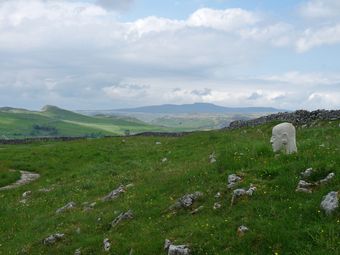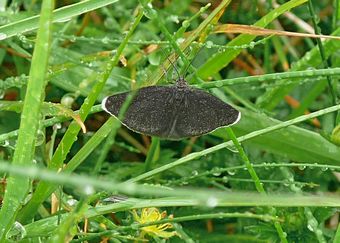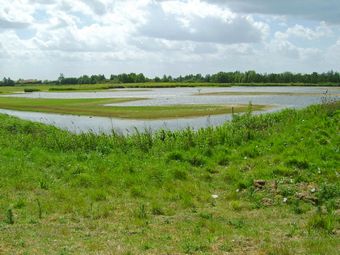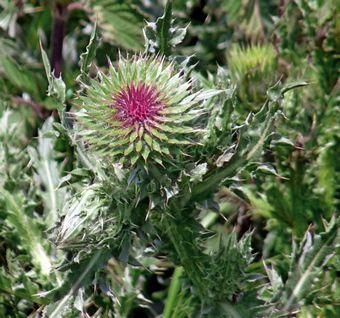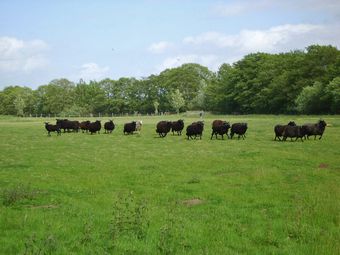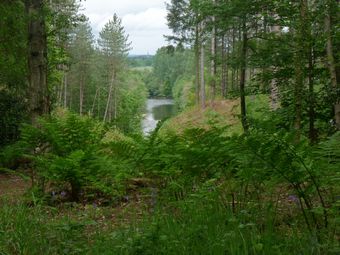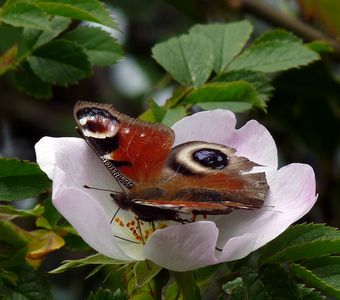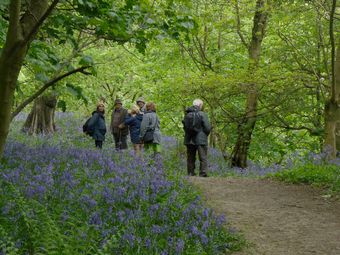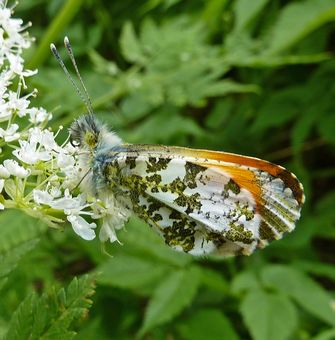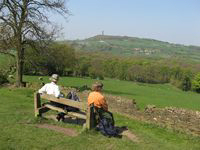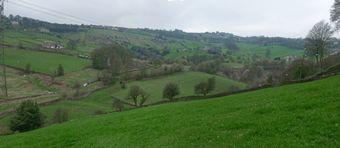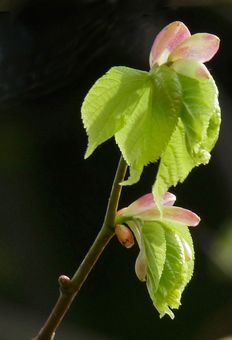WFV, Foxglove Covert Nature Reserve, 28th June 2011
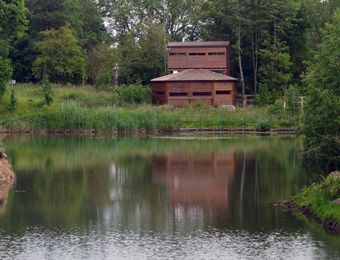 Two storey hideToday we headed up the A1 to Catterick Garrison where Foxglove Covert Nature Reserve is located at Cambrai Barracks. A full minibus left Bradford full of expectation of a varied day out and hoping maybe to catch a sighting of a uniformed Major or two! As is often the case for us on our Tuesday outings, the weather took up as we headed North and the heat of the previous day had dispersed.
Having reported to the entry gate and been given the security code for the gate to the reserve, we drove through the barracks and were welcomed at the field centre by Anne, our guide for the day. We were offered tea and whilst we marvelled at the facilities at the centre Anne gave us an introduction to the reserve, expaining that the site had first been a bird-ringing centre (now one of the top bird-ringing centres in the UK) before gradually being developed as a nature reserve through cooperation with the Army, Richmondshire District Council and Natural England. A recent grant from Natural England had funded new access-for-all paths, bird hides and further development of the impressive field centre.
We were taken on a tour of part of the reserve before lunch and then although free to do our own things afterwards, Anne did in fact stay with us and most of the party followed her again in the afternoon.
The habitats of the 100 acres at Foxglove Covert are varied, covering woodland, wetland, moorland, scrub and raised fen and the variety of flora and fauna diverse - over 2000 species having been recorded.
Two storey hideToday we headed up the A1 to Catterick Garrison where Foxglove Covert Nature Reserve is located at Cambrai Barracks. A full minibus left Bradford full of expectation of a varied day out and hoping maybe to catch a sighting of a uniformed Major or two! As is often the case for us on our Tuesday outings, the weather took up as we headed North and the heat of the previous day had dispersed.
Having reported to the entry gate and been given the security code for the gate to the reserve, we drove through the barracks and were welcomed at the field centre by Anne, our guide for the day. We were offered tea and whilst we marvelled at the facilities at the centre Anne gave us an introduction to the reserve, expaining that the site had first been a bird-ringing centre (now one of the top bird-ringing centres in the UK) before gradually being developed as a nature reserve through cooperation with the Army, Richmondshire District Council and Natural England. A recent grant from Natural England had funded new access-for-all paths, bird hides and further development of the impressive field centre.
We were taken on a tour of part of the reserve before lunch and then although free to do our own things afterwards, Anne did in fact stay with us and most of the party followed her again in the afternoon.
The habitats of the 100 acres at Foxglove Covert are varied, covering woodland, wetland, moorland, scrub and raised fen and the variety of flora and fauna diverse - over 2000 species having been recorded. 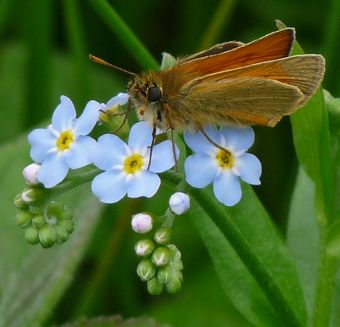 Large SkipperWe didn’t quite reach that number in the time that we were
Large SkipperWe didn’t quite reach that number in the time that we were 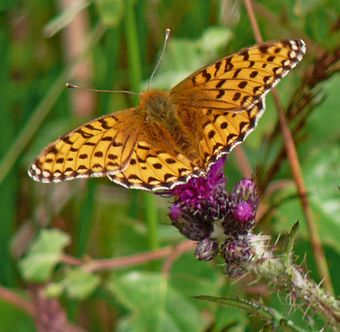 Dark Green Fritillarythere, but nevertheless recorded an impressive number of plant species, 25 birds (including a woodcock disturbed by Sue which tried to distract her from its nest), 8 butterfiles, various moths, damsel and dragonflies, and two red deer. After re-gathering at the field centre we were again offered tea before we headed off happily back down the A1, vowing to return again next year.
The reserve is truly impressive – Gillian described it as a 4-star plus reserve. It would probably have received a 5-star rating had the guide (50p) been up-to-date with recent path alterations ! The facilities are wonderful with lovely toilets, kitchen and study centre and we were made to feel very welcome. The reserve is holding an Open Day on Saturday 23rd July but individuals are welcome on any day during opening hours (although drivers need some form of identification). Check out the website at http://www.foxglovecovert.org.uk – you’ll even find a photo of the BEES group who visited today.
Dark Green Fritillarythere, but nevertheless recorded an impressive number of plant species, 25 birds (including a woodcock disturbed by Sue which tried to distract her from its nest), 8 butterfiles, various moths, damsel and dragonflies, and two red deer. After re-gathering at the field centre we were again offered tea before we headed off happily back down the A1, vowing to return again next year.
The reserve is truly impressive – Gillian described it as a 4-star plus reserve. It would probably have received a 5-star rating had the guide (50p) been up-to-date with recent path alterations ! The facilities are wonderful with lovely toilets, kitchen and study centre and we were made to feel very welcome. The reserve is holding an Open Day on Saturday 23rd July but individuals are welcome on any day during opening hours (although drivers need some form of identification). Check out the website at http://www.foxglovecovert.org.uk – you’ll even find a photo of the BEES group who visited today.Stuart

